The European Union (EU) and Its Place in Brussels, Its Capital
![]()
Do you want to know more about the European Union before you read further?
Click here to read a brief history
Soon after our arrival in Brussels, we began our exploration of the European Quarter, in the northeast part of the City, the home of the European Union. Emerging from the subway at Robert Schuman Circle, where Rue de la Loi meets the grand Parc du Cinquantenaire, we looked down Rue de la Loi and saw the towering arms of the Berlaymont Building, the home of the European Commission, soaring on the right and the golden glass walled Justus Lipsius Complex, the headquarters of the European Council of Ministers and the Council of Europe, commanding on the left.
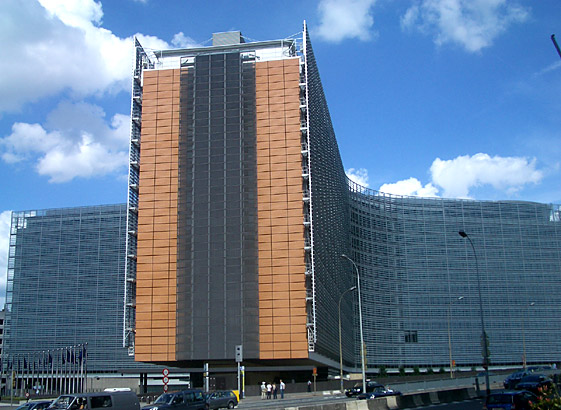

The curving dome of the European Parliament Building could be seen several blocks away on the edge of the historic Park Leopold.
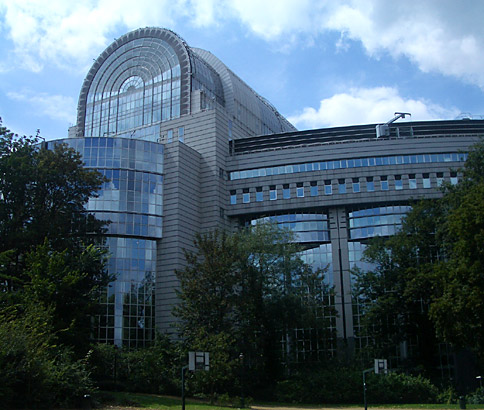
These places define the European Quarter which contains these landmark edifices along with many blocks of glass and marble walled office buildings of the EU entities.
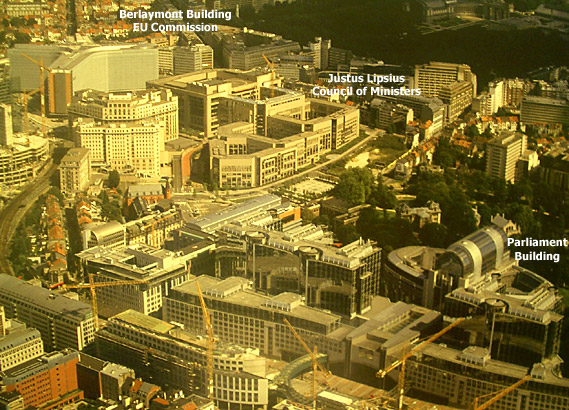
As we walked down Rue de Loi, the found the streets of the European Quarter to be filled with fast moving traffic whizzing past, creating a space between buildings and street that felt uncomfortable for us as pedestrians, and is so uncharacteristic of the rest of Brussels.
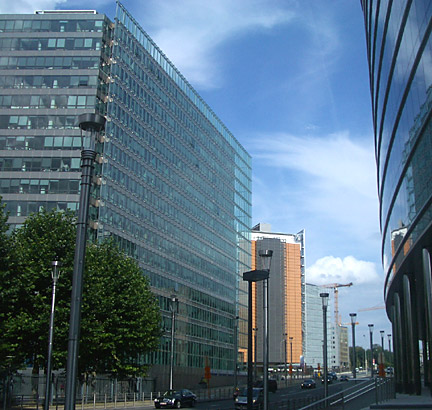

Around the edges of the Quarter, the traditional neighborhoods are still there, mostly intact, with their narrow streets, wide sidewalks and buildings with shops on the ground floors and residences above. As we sat at a cafe sipping our good Belgium bier, we looked across the street to the Berlaymont and then in the other direction to the traditional row houses and shops. This was a study in contrasts equal to those we had experienced in Asia!


How did these glass walled monolithic buildings come to be interjected into in these classic 19th century neighborhoods? We learned that ever since the beginning in 1958, when the first administrative departments of the European Economic Community (predecessor of the EU) established themselves in available office space, the government and development community of Brussels have responded to the needs of this emerging organization. This response continued as the requirements for office space and transport as well as for residential and commercial space multiplied over the years. We found the buildings that resulted to be architecturally innovative and grouped together to enable the whole EU administrative community to work closely together.
We also learned that this construction occurred with little comprehensive planning and resulted in great impacts on the existing and surrounding neighborhoods. In time, neighborhood associations attempted to engage the EU in a dialogue, aimed at mitigating the impacts of all this development. Over the years the culture and attitudes of the EU Institutions evolved as the EU leaders realized that they could not succeed without the support of the European people and the people of Brussels. An Office of the Ombudsman was established to provide the interface between the EU Institutions and the European people and this was the entity that the neighborhoods appealed to. We had a lesson in how this process actually worked from Henri Bernard a long time resident of the neighborhood just to the west of the Parliament building. He told us tales of the crusade he and his neighborhoods had waged and of the concessions the EU had permitted to protect the character of his neighborhood.
While many areas have been protected, not all the classic buildings were saved. Mr. Bernard told how the demolition of a brewery that once stood where the Parliament now stands became the rallying event to motivate the residents to stand up to the EU and protect their neighborhoods. Nearby, Plac du Luxembourg now faces a portion of the classic railroad station, nicely restored and in use as a museum (below left). A picture of the historic station is below right.
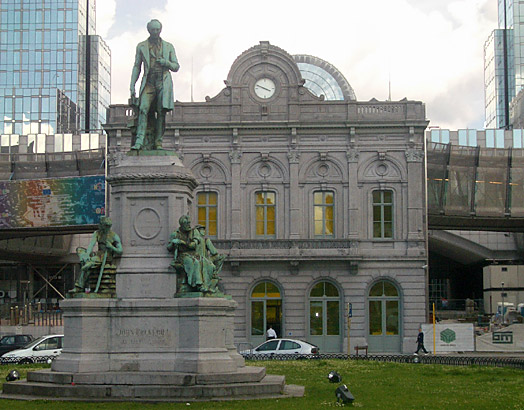
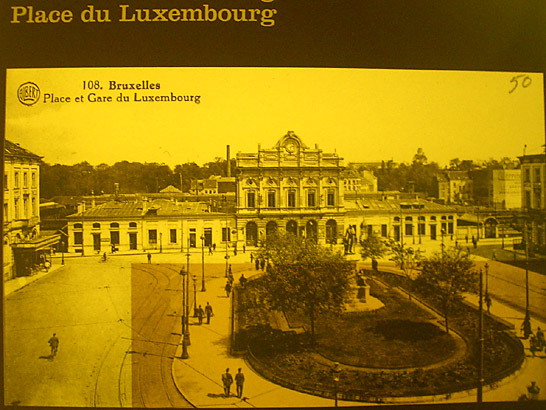
We also learned that in more recent years there are major discussions among the planning, architectural and development communities about the future of the EU in Brussels. We visited two exhibits that described the evolution of the buildings for Europe and portrayed a range of visions that are being considered for the future. The dramatic story is still evolving!
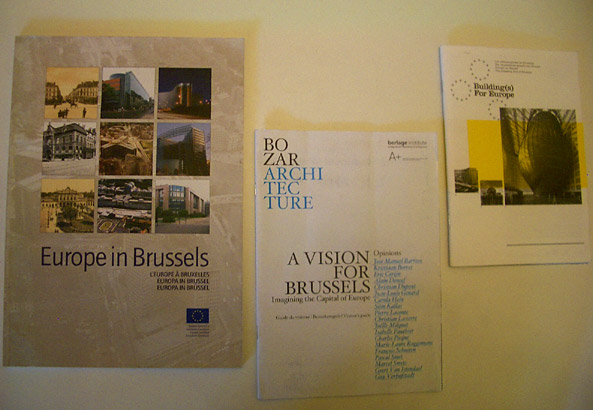
A Cautionary Tale
The evolution of the European Quarter in Brussels offers a cautionary tale for communities that are offered a grand opportunity. When the signatories of the Treaty of Rome asked Brussels' city fathers if they would host their new capitol, they could have said 'Non'. And in 1958, no one could have foreseen the European Union of 2007 and anticipated its expanding presence in Brussels. Yet they said 'Mais Oui! ', and did their best to welcome the EU to be part of their city.
Over the years until 1992, the city fathers were faced with the challenge of how to incorporate the EU into their city, considering the reality that Brussels was still the "temporary" capital of the EU. So what kind of a plan should they have considered. In that light, perhaps the city planners can be forgiven for not making a comprehensive plan. What do you think?
Click here to return to Our Travels in Europe - Summer of 2007 page
![]()